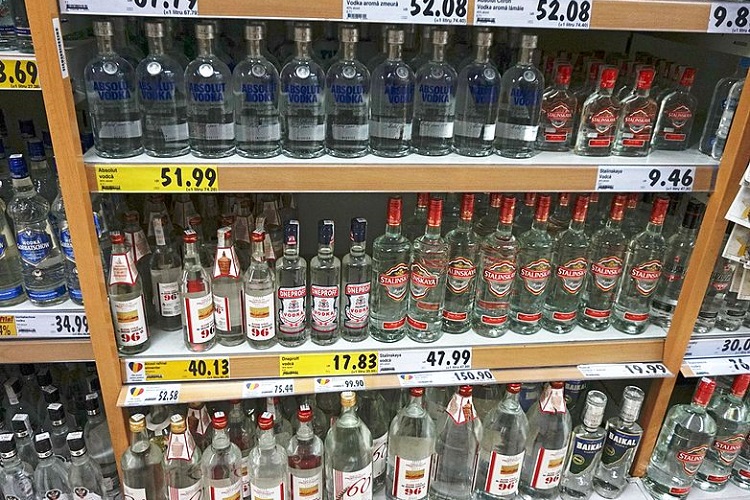

Photo by Tiia Monto.
By Mary Jane Dittmar
This column presents some of the recent research studies that depict the prominent role that drinking alcohol plays in the lives of some adult Americans. Many individuals turn to alcohol as a coping mechanism for physical, mental, or social conditions including pain, depression, shyness, failure to sleep or inability to forget, but many of these people (nearly 90,000) die from alcohol each year—more than half of them from injuries and overdoses associated with high blood alcohol levels, according to the National Institute of Health’s (NIH) National Institute on Alcohol Abuse and Alcoholism (NIAAA).
“Nearly 32 million adults in the United States (13 percent of the U.S. population aged 18 and older) consumed more than twice the number of drinks considered binge drinking (four or more drinks for women and five or more drinks for men) on at least one occasion,” according to a recently released 2013 survey conducted by the NIAAA. Participants responded to questions concerning their drinking habits over the preceding year.
“Of the nearly 90,000 people who die from alcohol each year, more than half, or 50,000, die from injuries and overdoses associated with high blood alcohol levels,” explains NIAAA Director George F. Koob, Ph.D. Binge drinking can produce blood alcohol levels greater than 0.08 percent, the legal limit for driving in the United States.
Moreover, evidence suggests that many people engage in “extreme binge drinking”–far beyond four or five drinks per occasion. Researchers analyzed three levels (Levels I, II, and III) of binge drinking during the previous year by respondents (Table 1).
Table 1. Extreme Binge Drinking Levels (Drinks on a Single Occassion)
Gender Level I Level II Level III
Women 4-7 8-11 12 or More
Men 5-9 10-14 15 or More
In another study, researchers, led by Ralph Hingson, Sc.D., director of the NIAAA Division of Epidemiology and Prevention Research, analyzed data from a series of large epidemiologic surveys that examined alcohol use and its co-occurrence with drug use and related psychiatric conditions for the period 2001-2002 and the period 2012-2013. They found that in the 2012-2013 survey, 39 percent of adult males and 27 percent of adult females reported Level I extreme binge drinking; 11 percent of males reported Level II extreme binge drinking; and seven percent reported Level III extreme binge drinking at least once in the past year. Five percent of females reported Level II extreme binge drinking and three percent reported Level III extreme binge drinking at least once in the past year (Table 2).
Table 2. National Epidemiologic Survey on Alcohol and Related Conditions, 2012-2013
Gender Level I Level II Level III
Women 27 5 3
Men 39 11 7
After controlling for age, race, sex, marital status, education, drug use, and smoking, binge drinkers, compared to non-binge drinkers, were more likely to have an alcohol-related emergency department visit: 13 times more for Level I, 70 times more likely for Level II, and 93 times more likely for Level III.
Extreme binge drinking was particularly common among participants who used other drugs. Combining alcohol with other drugs can increase the risk of injuries and overdose deaths. “Drinking at such high levels can suppress areas of the brain that control basic life-support functions such as breathing and heart rate, increasing one’s risk of death,” says senior author Aaron White, Ph.D., senior scientific advisor to the NIAAA director. “The risk increases further if other sedative drugs, particularly opioids or benzodiazepines, are added to the mix.” A report of the study’s findings is online at http://www.ajpmonline.org/article/S0749-3797(17)30161-7/fulltext . The NIH news release is at http://bit.ly/2rr59UE
NIAAA Strategic Plan to Advance Alcohol Research
The NIAAA released its strategic plan for research for the years 2017-2021, which “builds on recent transformative developments in basic research, prevention, diagnosis, and treatment, and charts the agency’s course for the next five years in addressing the many public health challenges caused by alcohol misuse,” says NIAAA Director Koob, Ph.D.
Dr. Koob points to “substantial” statistics that indicate the need for such a plan:
- Approximately 16 million people in the United States have alcohol use disorder (AUD).
- An estimated 88,000 people die from alcohol-related causes annually, making alcohol the fourth leading preventable cause of death in the United States.
- Alcohol is involved in nearly half of all liver disease deaths, and exposure to alcohol is a leading preventable cause of birth defects.
The NIAAA’s long-standing research has “substantially enhanced the understanding how alcohol-related problems develop,” Koob explains. “AUD is now widely recognized as a chronic brain disease with potential for recovery and recurrence.” The agency’s perspective is supported by advances in neurobiological research, has led to more effective prevention and treatment, and has provided support for integrating prevention and treatment services into mainstream health care, Koob adds.
The strategic plan was developed with input from NIAAA’s Advisory Council, the broader research community, and the public. The plan is available on the NIAAA Web site at
https://www.niaaa.nih.gov/strategic-plan.
 Mary Jane Dittmar is senior associate editor of Fire Engineering and conference manager of FDIC. Before joining the magazine in January 1991, she served as editor of a trade magazine in the health/nutrition market and held various positions in the educational and medical advertising fields. She has a bachelor’s degree in English/journalism and a master’s degree in communication arts.
Mary Jane Dittmar is senior associate editor of Fire Engineering and conference manager of FDIC. Before joining the magazine in January 1991, she served as editor of a trade magazine in the health/nutrition market and held various positions in the educational and medical advertising fields. She has a bachelor’s degree in English/journalism and a master’s degree in communication arts.

